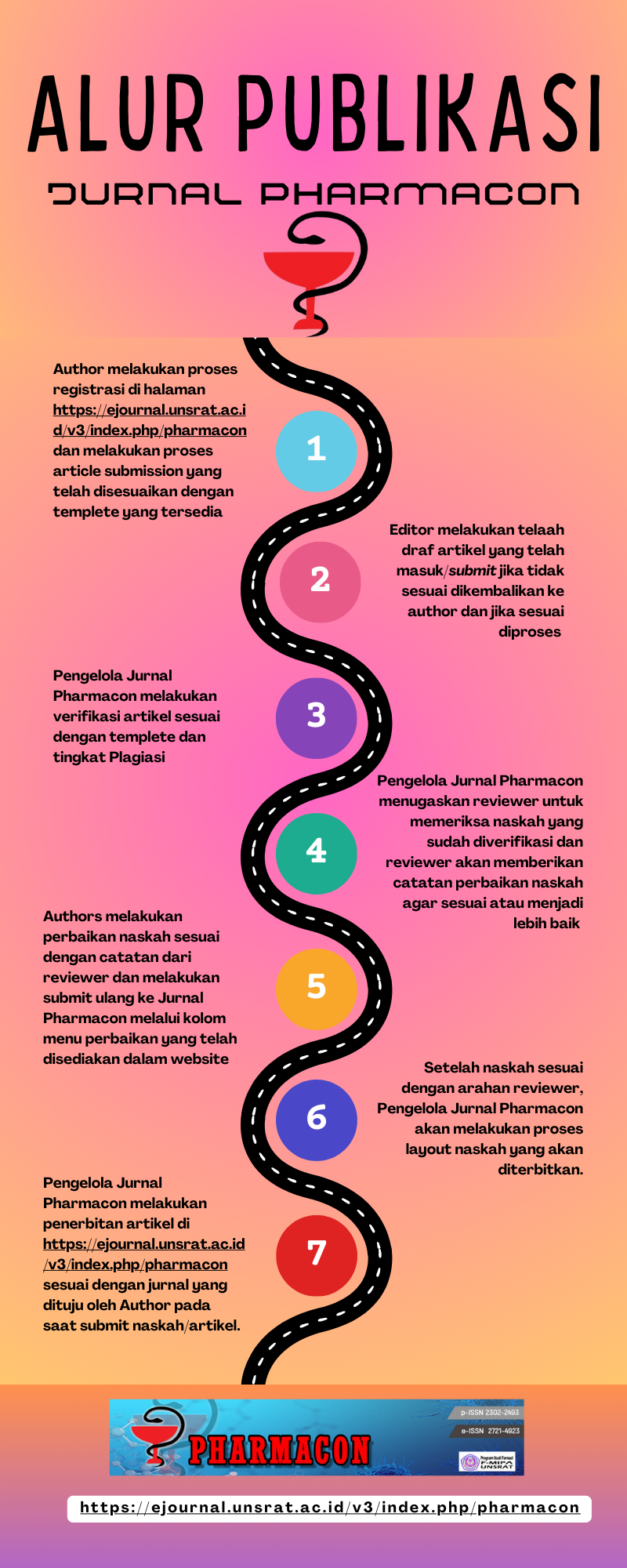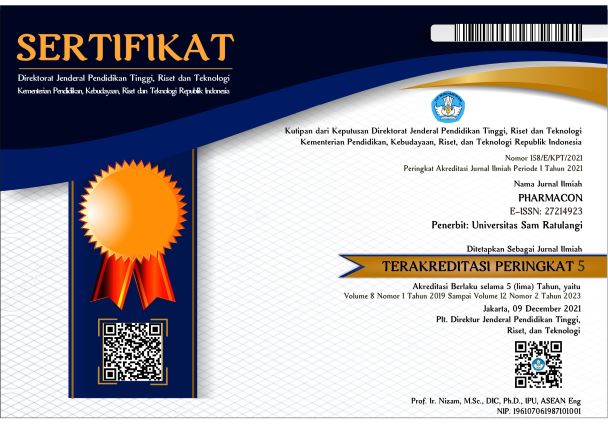Uji Efek Antidepresan Ekstrak Metanol Jamur Tlethong (Psilocybe cubensis) Pada Tikus Putih Jantan (Rattus norvegicus): ditinjau dari Immobility Time Dengan Metode Forced Swim Test
DOI:
https://doi.org/10.35799/pha.2.2013.2328Abstract
ABSTRACTTlethong mushroom (Psilocybe cubensis) contains psilocybin that potential as antidepressant.
The aim of this research was to examine the effect of Tlethong extract as antidepressant on
white male wistar (Rattus norvegicus). Antidepressant test were evaluate on white male
wistar which divided into 5 groups. The first group were administered with aquadest as
negative control, Second group were administered with amitriptilin as positive control, third
group were administered with Tlethong extract with dose 500 mg/KgBB, 625 mg/KgBB and
750 mg/KgBB then tail suspension test were conducted. Immobility time dengan metode
forced swim test. Obtained data were analyzed by one way ANOVA. The result shows that
Tlethong extract possess antidepressant activity evaluated by its immobility time using forced
swim test method.
Keywords: Antidepressant, immobility time, forced swim test, tail suspension test, Psilocybe
cubensis
Downloads
Published
2013-08-01
How to Cite
Kurama, N. P., Bodhi, W., & Wiyono, W. (2013). Uji Efek Antidepresan Ekstrak Metanol Jamur Tlethong (Psilocybe cubensis) Pada Tikus Putih Jantan (Rattus norvegicus): ditinjau dari Immobility Time Dengan Metode Forced Swim Test. PHARMACON, 2(3). https://doi.org/10.35799/pha.2.2013.2328
Issue
Section
Articles
License
Authors who publish with this journal agree to the following terms:
- Authors retain copyright and grant the journal right of first publication with the work simultaneously licensed under a Creative Commons Attribution-NonCommercial 4.0 International License that allows others to share the work with an acknowledgement of the work's authorship and initial publication in this journal.
- Authors are permitted and encouraged to post their work online (e.g., in institutional repositories or on their website) prior to and during the submission process, as it can lead to productive exchanges, as well as earlier and greater citation of published work (See The Effect of Open Access)









